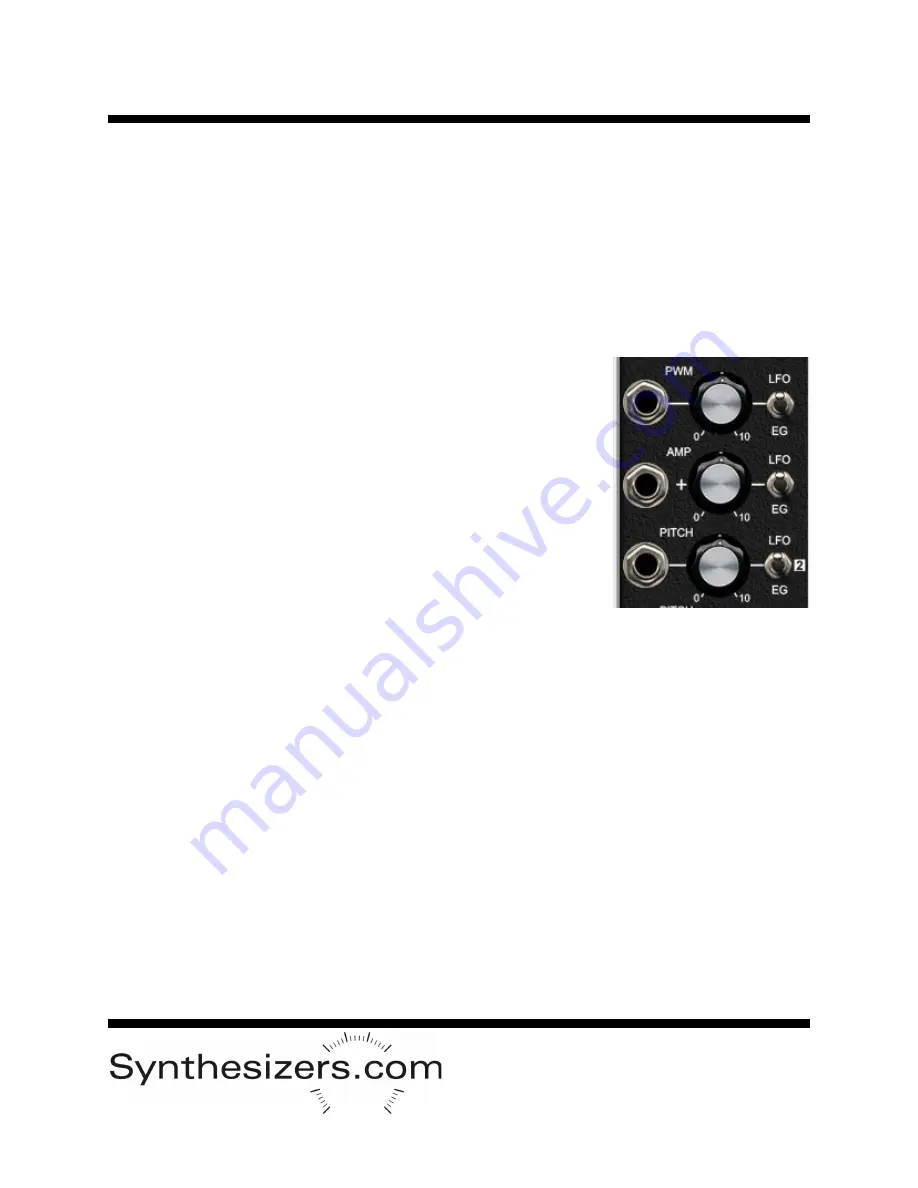
The magic of the Q169 module is the modulation possibilities and their easy access. Modulation is just a
fancy word for having one signal change something about another signal. For each oscillator, three
things can be modulated
-
Pulse width, waveform amplitude, and pitch. These three things can be modu-
lated by the LFO, by the Envelope Generator, by the other oscillator, by an external signal into the jack, or
manually controlled by the knob. The possibilities are amazing, and most don't require patch cables.
Pulse Width (PWM)
The width of the pulse waveform is controllable and has a nice effect on the sound, like phase shifting.
The oscillator's pitch stays the same but the waveform appears to our ears as moving. PWM only applies
to the pulse waveform.
The toggle switch determines the source of the modulation. Options are
LFO or EG (Envelope Generator). When LFO or EG is selected, the knob
provides control over the attenuation (strength of the effect).
The center toggle switch position is off and then the knob gives you man-
ual control over the pulse width from 0 to 50%. Since an inverted wave-
form sounds the same to our ears, 50% to 100% sounds the same. If you
need an inverted form of the pulse for modulation purposes, use the IN-
VERT switch.
A jack is provided for an external signal to control the pulse width. When
a plug is inserted, the toggle switch sources are bypassed and the knob
provides attenuation. The external signal can come from another module
or perhaps the S&H output on the Q168 Aid module, or possibly noise or
another waveform from the other oscillator.
Amplitude
Each oscillator on the Q169 has a built
-
in VCA (amplifier) to provide con-
trol over the waveform amplitude. This provides many possibilities not found on other oscillators such as
using the module as a stand
-
alone voice with the VCAs controlled by the internal EG, or by creating FM
-
style operator synthesis where pitch and amplitude modulation provides amazing new sounds. All of this
is easy with Osc+.
The toggle switch determines the source of modulation. When LFO or EG is selected, the knob provides
attenuation. When the toggle switch is in the center, the knob provides manual control of the amplitude
-
this is basically a volume control.
A jack is provided for an external signal to control amplitude. This signal is added to the other sources as
indicated by the panel graphics. Use the jack to modulate from the other VCO.
Pitch
The toggle switch provides the source of pitch modulation
-
LFO, EG, or the other VCO. The knob pro-
vides attenuation in each position. When an external signal is plugged into the jack, the toggle switch
source is bypassed and the knob becomes the attenuator for it.
The result of pitch modulation is dramatic, especially when having both oscillators modulate each other.
Experimentation is the only way to fully appreciate this.
When selecting position [2] on the toggle switch, make sure oscillator #2 has its AMP turned on.
Modulation Section
Q169
Osc+
Summary of Contents for Q169 Oscillator++
Page 14: ......
































